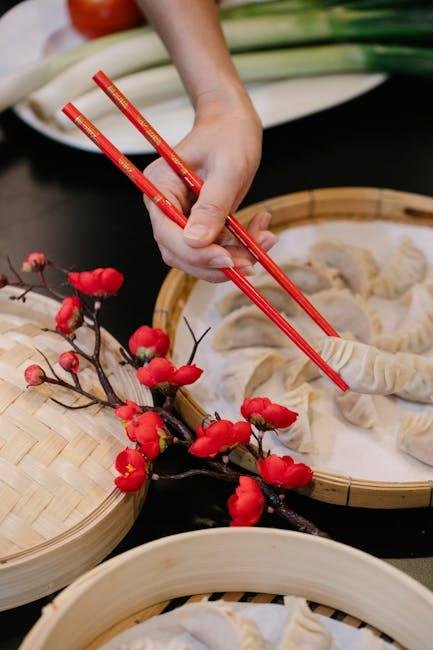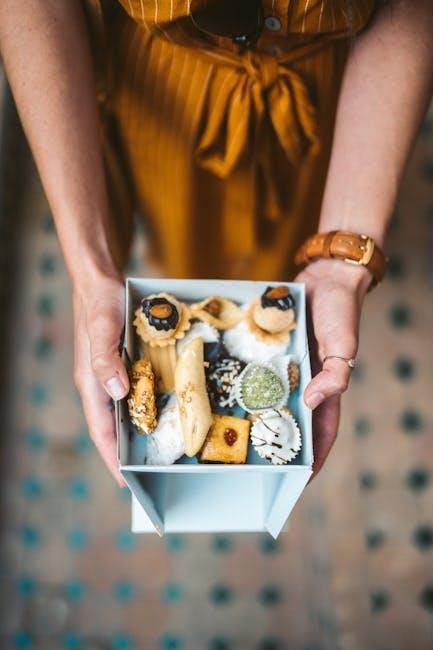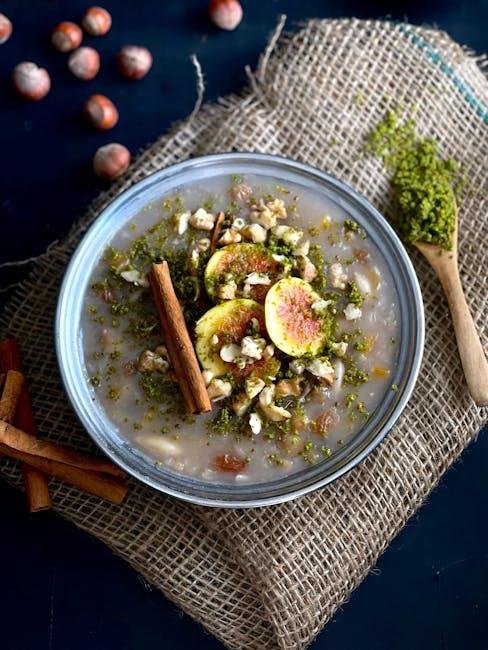exploring Middle Eastern Flavors at Home
The cuisine of the Middle East is a tapestry woven with vibrant spices,fresh herbs,and a rich history that speaks to centuries of tradition and cultural exchange. From the aromatic allure of za’atar to the warm embrace of cumin, every ingredient carries stories of generations, offering not just nourishment but also a connection to a diverse array of cultures and communities. As we embark on a culinary journey through the heart of this region, we invite you to unlock the secrets of Middle Eastern flavors right in your own kitchen. This exploration goes beyond recipes; it’s about embracing new techniques, ingredients, and the joy of sharing meals rich in flavour and meaning. whether you are a novice cook or a seasoned chef, prepare to ignite your senses and create dishes that echo the warmth and hospitality of Middle eastern dining, all while discovering the joy of bringing these beloved flavors into your home.
Unlocking the Spice Cabinet: Essential Middle Eastern Ingredients for Authentic Dishes
The heart of Middle Eastern cuisine lies in its vibrant and aromatic spices, each contributing to the rich tapestry of flavors unique to the region. To embark on a culinary journey, consider stocking your spice cabinet with the following essentials:
- Cumin – A warm, earthy spice that is frequently enough the backbone of Middle Eastern dishes.
- Coriander – With its citrusy notes, this spice complements both savory and sweet dishes.
- Cinnamon – A sweet and warming spice that finds its way into both desserts and savory stews.
- Sumac – Known for its tangy flavor, it adds brightness to salads and grilled meats.
- Cardamom – Often used in desserts and coffee, its sweet and spicy flavor is distinctive and aromatic.
- za’atar – A fragrant blend of herbs, sesame seeds, and sumac, ideal for seasoning meats and vegetables.
In addition to spices, having a few staple ingredients can transform your dishes and bring that authentic touch. Consider adding these key items to your pantry:
| Ingredient | Role in Cuisine |
|---|---|
| Olive Oil | Essential for cooking and dressings,it brings richness and flavor. |
| Lentils | A protein-packed staple, often used in soups and stews. |
| Chickpeas | Versatile in salads, stews, or ground into hummus, adding texture and nutrition. |
| Yogurt | Used as a cooling condiment or ingredient in many dishes, providing tanginess and creaminess. |
| Rose Water | Adds a floral note to desserts and beverages, enhancing the sensory experience. |

A Journey Through Traditional Cooking Techniques: Bringing Middle Eastern Heritage to Your Kitchen
To truly immerse yourself in the rich tapestry of Middle Eastern cuisine, it’s essential to embrace time-honored techniques that have been handed down through generations. Slow cooking plays a pivotal role in building deep, complex flavors, especially in traditional dishes like stews and tagines. Using a well-seasoned clay pot can replicate the cooking methods employed by our ancestors, allowing heat to distribute evenly while preserving the moisture and nutrients of the ingredients. Here are a few methods to explore:
- Grilling: Infuse your dishes with smoky notes by grilling marinated meats over charcoal or an open flame.
- Fermentation: Get creative by making your own labneh or pickling vegetables, enhancing the flavor profile of your meals.
- Flatbread Baking: Experiment with your own dough and cook it on a hot stone or in a traditional oven for authentic flavors.
Another crucial aspect is the use of spices, which not only define the character of Middle Eastern dishes but also exemplify the region’s heritage. Each spice blend, like za’atar or baharat, tells a story of its origin and the cultural context in which it thrives.By combining spices with fresh, locally-sourced ingredients, you can create a harmonious balance that evokes the essence of Middle Eastern kitchens. Here’s a simple guide to get started with essential spices:
| Spice | Flavor Notes | Common Uses |
|---|---|---|
| Cumin | Earthy, warm | Hummus, stews |
| Coriander | Citrusy, floral | Flatbreads, salads |
| Sumac | Tangy, lemony | Salads, seasoning |

Savoring the Art of Flavor Pairing: Crafting Signature Middle Eastern Dishes with Ease
Exploring the depths of Middle Eastern cuisine reveals a treasure trove of vibrant flavors, aromas, and textures that can elevate any dish. One of the secrets to mastering this culinary art lies in understanding flavor pairing. When crafting signature dishes, it’s essential to identify complementary ingredients that enhance each other. Consider these harmonious pairings:
- Cumin and coriander: Their earthy notes bring warmth to stews and marinades.
- Sumac and parsley: Brightens salads and dips with a zesty punch.
- Pomegranate molasses and walnuts: Adds depth and crunch to roasted vegetables and grain dishes.
- Yogurt and garlic: Creates a creamy, tangy sauce ideal for grilled meats.
When it comes to assembling a meal, the balance of flavors is key – not just in ingredients but also in textures. The combination of crunchy, creamy, tangy, and sweet elements will create an unforgettable dining experience. A simple table can definitely help you visualize how to create the perfect plate:
| Ingredient Type | Example |
|---|---|
| Crispy | Fried falafel |
| Creamy | Hummus |
| Fresh | Tabbouleh |
| Heartwarming | Slow-cooked lamb |
embrace your creativity and let these elements guide you in developing unique interpretations of classic dishes. As you experiment,remember that the journey toward flavor mastery is as rewarding as the delicious meals you create.

Desserts and Beverages: sweet and Spicy Ways to Round Off Your Middle Eastern Culinary Adventure
To truly complete your Middle Eastern feast, indulge in the rich tapestry of desserts that embody both sweet and spicy flavors. Baklava, a classic favorite, features layers of flaky pastry filled with chopped nuts soaked in honey and fragrant spices. For those seeking a refreshing palate cleanser, explore Mhalabia, an aromatic pudding infused with rose water and topped with crushed pistachios. Other delightful options include:
- Knafeh: A cheese-filled pastry topped with syrup and nuts.
- Halva: A sweet confection made from tahini and sugar, often flavored with vanilla or chocolate.
- Ruz bil laban: creamy rice pudding often garnished with cinnamon and nuts.
equally important are the beverages that accompany these delectable treats. Mint tea, with its refreshing blend of green tea and fresh mint, is a staple in many households and perfect for sipping alongside dessert. For those who crave something exotic, Arabian coffee combines dark coffee with cardamom, creating a warm, aromatic experience that is sure to awaken your taste buds. Explore these enticing drinks:
| Beverage | Description |
|---|---|
| Jallab | A refreshing drink made with dates, tamarind, and rose water. |
| Lemonade with Blossom Water | A sweet, tangy lemonade infused with orange blossom for a floral twist. |
| Pomegranate Juice | A vibrant drink bursting with flavor and antioxidants. |
Insights and Conclusions
As we draw our culinary journey through the rich tapestry of Middle Eastern flavors to a close, its clear that the heart of this vibrant cuisine lies not only in its diverse ingredients but also in the stories they weave. From the aromatic spices that transport us to bustling markets, to the intricate dishes that speak of tradition and shared moments, Middle eastern cooking offers an invitation to explore and to connect.
Whether you’re experimenting with za’atar in your morning eggs or perfecting your family’s secret recipe for baklava, remember that each dish is a canvas, waiting for your own interpretation and creativity. Embrace the process, and let your kitchen become a vibrant hub of cultural expression, where the essence of the Middle East can live on in every bite.
So, gather your spices, roll out your pita, and don’t forget to share these delightful experiences with family and friends. With each meal, you’ll not only satisfy your palate but also foster a deeper appreciation for the shared heritage that continues to inspire kitchens around the world. Happy cooking!




